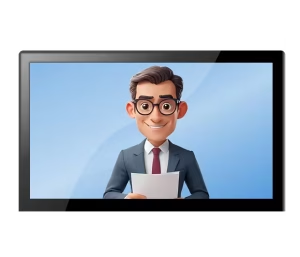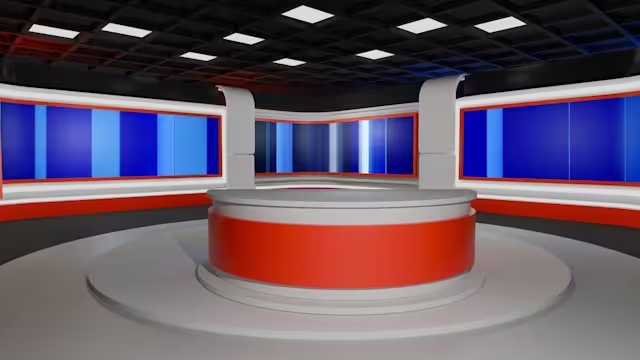In recent years, viewers across the globe have been introduced to a new kind of media personality—one that does not sleep, never fumbles a line, and can deliver the news flawlessly in multiple languages. From the introduction of “Qiu Hao” by China’s Xinhua News Agency to the growing number of digital influencers on social media, the presence of the virtual human is undeniable. These figures, often called Virtual News Anchors or AI Anchors, represent a significant leap in media technology.
But what exactly are they? At their core, these anchors are computer-generated avatars, powered by sophisticated artificial intelligence, meticulously designed to present information to an audience. The immediate question that arises for most is a fundamental one of process and origin: How are these digital presenters actually made? Answering this requires looking beyond the surface of the final video.
The creation of a virtual news anchor is not a single, simple process but a convergence of multiple advanced technological fields, including computer vision, Natural Language Processing (NLP), Generative AI, and photorealistic 3D rendering, all working in concert to create a believable digital persona. This article will deconstruct that complex process, providing a comprehensive look at the technical pipeline that brings a virtual news anchor from a concept to a final, broadcast-ready reality.
The Foundational Layer: Data Acquisition and Model Training

Before an AI anchor can read a single word of a script, it must first exist as a digital entity. The very first step in this process is creating a highly realistic digital copy of a person. This isn’t just a simple photograph or video; it’s a deep and detailed collection of data that will serve as the foundation for everything that follows. This phase is all about gathering the raw materials the AI will use to learn and eventually perform.
A. Digital Asset Creation
The goal here is to build the “digital puppet”—the visual and auditory model of the anchor that the AI will later control. This process has three critical components: creating the 3D model, capturing movement, and cloning the voice.
First is the creation of the 3D model itself, which is often done using a technique called photogrammetry. Imagine you want to create a perfect digital statue of a person. With photogrammetry, you would use hundreds of high-resolution cameras, all arranged in a sphere around the person. All the cameras take a picture at the exact same moment. Special software then looks at all these photos, finds common points from different angles, and pieces them together to build an incredibly detailed 3D model.
This process captures everything, from the precise shape of their face to the texture of their skin, including tiny wrinkles and pores. The result is a static but hyper-realistic digital double, or “base mesh,” of the human subject.
However, a static model is not enough; an anchor needs to move realistically. This is where Motion Capture (MoCap) comes in. You have likely seen this technology in behind-the-scenes videos for movies like Avatar or in modern video games where characters move with lifelike fluidity. The human actor, upon whom the virtual anchor is based, wears a special suit covered in dozens of small sensors or markers. As they move, speak, and make facial expressions, specialized cameras track the exact position of each marker in 3D space.
This data captures the subtleties of human movement, the slight head tilt when asking a question, the way someone’s eyes crinkle when they smile, or the specific gestures they use with their hands. This library of movements is essential for making the final AI anchor appear natural and not like a stiff robot.
Finally, a silent anchor isn’t very useful. The third crucial step is Voice Cloning. This is far more advanced than a simple recording. The human talent spends many hours in a recording studio, reading thousands of sentences with different emotions and intonations. This extensive audio library is fed into a deep learning system. The AI doesn’t just memorize the words; it learns the “music” of the person’s voice—their unique pitch, pace, rhythm, and how their tone changes when they are reporting serious news versus a lighter story. This allows the AI to eventually generate brand-new sentences in that person’s voice, sounding completely natural as if the person spoke themself.
B. The AI Training Pipeline
With all the digital assets collected, the next phase is to build the AI “brain” that will bring the digital puppet to life. This is where the most complex and fascinating part of the process happens.
The core technology that generates the final video of the anchor speaking is often a type of AI called a Generative Adversarial Network (GAN). This sounds complicated, but the concept behind it can be understood through a simple analogy. Imagine a team of two: an art forger and an art critic.
- The Generator (the art forger) is an AI that has never seen a real news broadcast. Its job is to create a fake video frame of the virtual news anchor. Its first attempts are terrible—blurry, distorted, and obviously fake.
- The Discriminator (the art critic) is another AI. Its job is to look at a video frame and decide if it’s a real one (from the motion capture sessions) or a fake one made by the Generator. At first, this is very easy. The critic can immediately spot the forger’s bad work.
Here’s where the magic happens. Every time the critic spots a fake, it gives feedback to the forger on why it looked fake. The forger takes this feedback and tries again, making a slightly better fake image next time. At the same time, the critic gets better at spotting even the smallest imperfections. This process is repeated millions of times. The forger gets better at making fakes, and the critic gets better at spotting them.
They are adversaries, constantly competing and forcing each other to improve. Eventually, the forger (Generator) becomes so skilled that it can create video frames that are practically indistinguishable from the real thing, fooling even the expert critic (Discriminator). At this point, the AI is ready to generate new, high-quality video of the anchor.
At the same time, the voice data is used to train the Text-to-Speech (TTS) engine. Using AI models like WaveNet, the system learns to convert any typed text into spoken words using the cloned voice. This advanced TTS system doesn’t just produce a robotic voice reading words; it understands punctuation and context to add human-like pauses and inflections, making the delivery sound believable and engaging.
The Content Production Workflow: From Script to Screen

Once the AI model is fully trained and the digital assets are ready, creating a new virtual news segment becomes a remarkably efficient, streamlined process. It follows a clear, step-by-step workflow that transforms a simple text document into a finished video.
Step 1: Script Input
The process begins with what newsrooms have used for decades: a script. A journalist or producer writes the news report and finalizes the text. This script is then simply uploaded or pasted into the AI system’s interface. This is the only human creative input needed for the anchor’s performance.
Step 2: Audio Generation
As soon as the script is entered, the custom Text-to-Speech (TTS) engine gets to work. It reads the text and, using the cloned voice it was trained on, generates a complete audio track of the news report. The AI intelligently interprets commas as short pauses and periods as full stops, and it can even be instructed to put emphasis on certain words or adopt a specific tone (e.g., serious, urgent, or upbeat) for the segment.
Step 3: Lip Sync and Facial Animation
This is where the visual and auditory elements are perfectly merged. The AI performs an analysis of the audio track it just created. It breaks down every word into its basic sounds, known as phonemes. For example, the word “hello” is broken into sounds like “h,” “e,” “l,” and “o.”
The AI has already learned which mouth shape, or viseme, corresponds to each sound. It knows that to make a “p” sound, the lips must be pressed together, and for an “o” sound, they must be rounded. The system then generates a precise animation for the 3D model’s mouth, perfectly synchronized to the timing of the audio track. This ensures that the lip movements are not just close but exact, avoiding the distracting effect seen in poorly dubbed foreign films.
But it doesn’t stop there. The AI also adds other subtle, autonomous animations to make the anchor look alive. It generates natural blinks, slight head movements, and small facial expressions that are appropriate for the context of the script, all learned from the original motion capture data.
Step 4: Video Rendering
The final step is to put everything together and create the final video file. This is handled by a powerful rendering engine, which is very similar to the technology used to create the graphics in high-end video games. The animated 3D model of the anchor is placed into a virtual news studio. The engine calculates how the virtual lights should reflect off the anchor’s skin and clothes, creates realistic shadows, and combines the character with the background.
This can be done in two ways. For very high-quality productions, it might be rendered offline, which takes longer but produces movie-quality results. For faster turnaround, it can be rendered in real-time, allowing for a finished video to be produced in just a few minutes after the script is submitted. The final output is a complete, broadcast-quality video segment, ready to be put on the air or online.
Key Technologies and Entities Driving the Industry
The creation of virtual news anchors is not happening in a vacuum. It is being driven by a handful of innovative companies and enabled by foundational technologies developed by industry giants. Understanding these key players helps to see the bigger picture of this emerging field.
When we talk about this technology, we are often talking about synthetic media, which is any media (video, audio, or images) that has been generated or heavily modified by AI. Virtual news anchors are a prime example of this. The technology is also closely related to, but not always the same as, deepfake technology. While deepfakes are often associated with misuse, the underlying generative AI principles are what power these professional applications. The goal is to create a believable digital human or digital avatar for legitimate purposes.
Several companies have emerged as leaders in providing the platforms to create these AI presenters.
- Synthesia is one of the most well-known. Their platform is often described as being like a “PowerPoint for video.” Users can choose from a library of stock AI avatars (or create a custom one) and simply type in a script. The platform then generates a video of the avatar speaking that script, making video production accessible to businesses for training and marketing videos.
- Deepbrain AI specializes in creating highly realistic, conversational AI humans. Their focus is not just on pre-scripted videos but also on real-time interaction, creating virtual assistants and welcome kiosks that can have simple conversations with people.
- Hour One focuses on the professional video production market. They work with companies to create a photorealistic digital clone of a key person, like a CEO or a brand spokesperson. The company can then generate new video messages from that person on demand, without needing them to be in a studio.
- Soul Machines takes a slightly different approach, focusing on creating what they call “Digital People” with a “Digital Brain.” Their creations are designed to be more autonomous and emotionally responsive, aimed at customer service and companionship roles where they can react to a user’s facial expressions and tone of voice.
Behind all these platforms are the giants of the tech world. The Xinhua News Agency in China was a major pioneer, putting the concept on the global map with its first AI anchors in 2018. But perhaps the most critical entity is NVIDIA. Known to most people for making the powerful graphics cards (GPUs) that power gaming PCs, NVIDIA is also at the forefront of AI research and development. Their GPUs provide the massive computing power needed to train these complex AI models.
Furthermore, they develop the software frameworks, like their Omniverse Avatar Cloud Engine, that give developers the tools to build and animate these digital humans. Without the foundational hardware and software from companies like NVIDIA, the rapid progress in this field would not be possible.
Commonly Asked Questions

As this technology becomes more common, many people have the same set of questions. Here are clear, direct answers to some of the most frequently asked questions about virtual news anchors.
Q1: Are virtual news anchors real?
No, they are not real in the sense that they are not living, thinking, or conscious beings. They are extremely advanced digital puppets. They are photorealistic computer-generated characters whose speech and movements are created by artificial intelligence. While they may be based on a real person’s appearance and voice, their on-screen performance is entirely generated by algorithms following a script.
Q2: What AI is used for virtual news anchors?
It’s not a single AI but a combination of several different AI technologies working together. The main components are:
- Natural Language Processing (NLP): This allows the AI to understand the text script and prepare it for speech.
- Text-to-Speech (TTS): This is the AI that converts the text script into lifelike audio using a cloned human voice.
- Generative AI (like GANs): This is the computer vision AI that generates the final video, creating realistic facial movements, lip-syncing, and expressions.
Q3: What are the benefits of virtual news anchors?
There are several key advantages for media organizations:
- Efficiency & Scalability: An AI anchor can work 24/7 without getting tired. It can produce news reports around the clock and can even be programmed to deliver the same report in dozens of different languages instantly, something a human anchor cannot do.
- Cost-Effectiveness: While the initial investment to create a custom virtual anchor can be high, over the long term, it can reduce costs associated with studio time, camera crews, makeup artists, and talent salaries for routine updates.
- Consistency: The AI anchor will always have the same appearance, tone, and perfect delivery. It never has a bad day, stumbles over a difficult word, or goes off-script, ensuring a consistent brand image for the news outlet.
Q4: What are the ethical concerns of AI news anchors?
This is a very important question, and there are significant ethical challenges to consider:
- Disinformation and Deepfakes: The same technology that creates a helpful virtual news anchor could be used by malicious actors to create fake videos of world leaders saying things they never said, spreading misinformation and creating political instability.
- Job Displacement: There is a real concern that as this technology improves, it could replace human journalists, anchors, and production staff, leading to job losses in the media industry.
- Lack of Authenticity & Trust: Can we truly trust news delivered by a non-human entity that has no understanding or personal conviction about the stories it is reporting? There is a risk that as the line between real and synthetic blurs, audiences may become more skeptical of all media. This also relates to the “uncanny valley,” where a digital human that is almost perfect can feel eerie or unsettling to viewers.
- Bias in AI: AI models learn from the data they are given. If the data used to train an AI anchor contains hidden biases (related to race, gender, or culture), the AI can accidentally perpetuate and even amplify those biases in its reporting.
The Future Trajectory: From Presenter to Interactive Journalist
The technology behind virtual news anchors is still in its relatively early stages. What we see today is impressive, but it is just the beginning. The future trajectory of this technology points towards a shift from a simple presenter to a truly interactive digital journalist.
Currently, most AI anchors are used for one-way communication: they read a pre-written script to an audience. The next major leap will be real-time interaction. Imagine a future where, instead of just watching a news report, you could ask the virtual anchor questions directly. You might be watching a story about the economy and ask, “Can you explain what inflation means in simpler terms?” or “Show me how this news affects my local area.” The virtual anchor, powered by advanced conversational AI, would be able to understand your question and provide a personalized, spoken answer in real-time.
This leads to the concept of hyper-personalization. News could become a dynamic, two-way conversation. A virtual anchor could tailor the news delivery specifically for you. It could know you prefer shorter summaries, are interested in science and technology, and speak Spanish as your first language. It would then present the day’s news to you in a format, style, and language that is perfectly suited to your individual preferences.
Of course, the push for greater realism will continue. Researchers are working tirelessly to overcome the “uncanny valley” and create digital humans that are completely indistinguishable from real ones in every way. As AI models become more sophisticated and computer graphics more powerful, the subtle imperfections that still sometimes give away a digital human will gradually disappear. The ultimate goal for many developers is to achieve a level of realism that is not just believable but truly seamless.
Conclusion: A Synthesis of Art and Algorithm
The process of creating a virtual news anchor is a powerful demonstration of how far technology has come. It is a meticulous synthesis of human artistry and powerful algorithms. The journey begins with capturing the essence of a real person—their image, voice, and movements—and translating it into digital data. That data is then used to train a sophisticated artificial intelligence, teaching it to speak, emote, and present information with startling realism. The result is a digital persona capable of working tirelessly and communicating on a global scale.
While this technology opens up incredible new possibilities for efficiency, accessibility, and innovation in media, it also brings with it profound responsibilities. We must navigate the complex ethical landscape concerning trust, disinformation, and the future of human jobs with care and foresight. Ultimately, a virtual news anchor is a tool. It is a reflection of our own ingenuity, and its impact on society—for better or for worse—will be defined not by the code itself, but by the human choices that guide its application.







